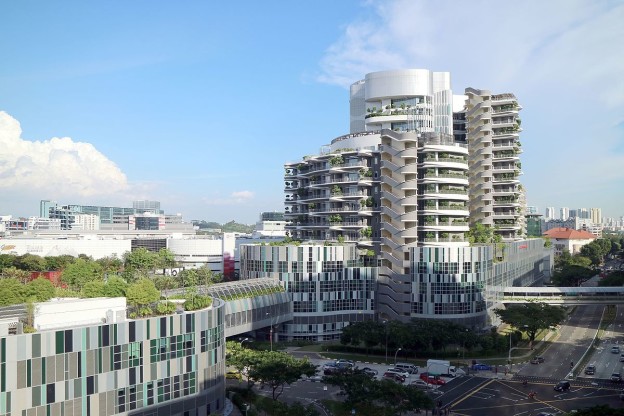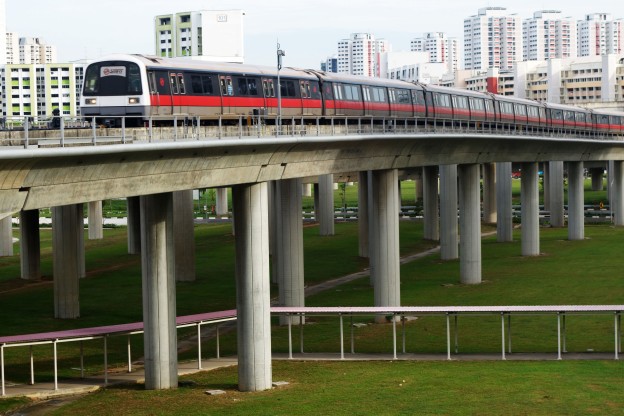Let’s look at the Jurong Masterplan. Its’ reputation as the industrial hub of Singapore is well-known and long established with numerous factories and plants in the neighbourhood.

However, Jurong is not on the top of many Singaporean’s wish list when discussing ideal residential locations. However, this may soon change with the government’s ambitious plan to transform Jurong into Singapore’s second CBD.
History of Jurong
Jurong is located towards the western end of Singapore. Neighbouring areas include Pioneer to the southwest and Tuas to the west. Jurong also houses the only land link to Jurong Island, which is home to many oil refineries and petroleum companies.
Prior to 1960, Jurong was mainly a rural area dominated by plantations. The main crops grown were gambier and rubber. Fishing was also an important activity carried out mainly by local Malays and the Orang Laut.
In 1959, the People’s Action Party (PAP) won the first general election held in a self-governing Singapore. At that time, job creation was a main priority for the new government. Dr Goh Keng Swee was tasked to boost Singapore’s weak economy and create more job opportunities for citizens. He determined that industrialisation was the answer.
In 1960, the government announced that a new industrial town would be planned and developed in Jurong. In 1962, the National Iron and Steel Mills (since renamed NatSteel) became the first factory to be built in Jurong. By 1963, a total of 24 factories had set up shop in the new industrial town and in 1965 Jurong Port became operational.
Development and construction of Jurong Island started in the early 1990s. Today, many major petroleum companies have their refineries and storage tanks there. Jurong Island is linked to the mainland via the Jurong Island Causeway.
What’s in Jurong
In 1960, Jurong was planned as an industrial town. Since then, numerous industrialists and manufacturers have set up factories in the neighbourhood. The first industrialists in Jurong were most probably involved in heavy industries such as steel mills and brickworks, or labour-intensive assembly-line factories.
As Singapore changed focus to more value-add industries, more clean rooms and research-based centres started operations in Jurong. Recently, Facebook announced that they will build a $1.14 billion data centre in Tanjong Kling. When operational in 2022, it will be Facebook’s first in Asia and 15th in the world.
The development of Jurong Island in the early 1990s only enhanced Jurong’s reputation as the industrial hub of Singapore. Many who’s who in the oil and petroleum industry operate from the island. ExxonMobil, Chevron, Shell and Sumitomo Chemical are just some of the big boys on Jurong Island.
Jurong has often been mistaken as only an industrial town with not much in the way of amenities for residents. However, these people cannot be more wrong! Residents of Jurong know that their town is a well-hidden gem.
With five malls in the neighbourhood, residents of Jurong do not need to travel far from home for anything. The offerings at JEM, JCube, Westgate and Jurong Point can easily rival those found in any other suburban mall while IMM has numerous outlet shops that will satisfy any bargain hunter.
However, if a Juong resident needs to travel out of the area, it will be a breeze because the town is well served by five MRT stations, three expressways and numerous roads.
Looking for a property in Jurong? Find an agent to take the hassle out of your home search.
Jurong in the next 10 years
The government has ambitious plans to turn Jurong into Singapore’s second CBD. This is in line with the government’s larger plan to decentralise and bring more job opportunities closer to homes.
Under the masterplan for the Jurong Lake District (JLD), there will be more than 20,000 new homes, more commercial spaces in preparation for the creation of more than 100,000 new jobs, more green spaces and improved connectivity.
A new integrated tourism development will also be developed in JLD, with its location near Chinese Garden MRT station and the new Science Centre. To be completed in 2026, the attraction will span 7ha and will include a hotel, restaurants and shops.
As part of plans to improve the transport network in Jurong, the Jurong Region Line (JRL) is being constructed. When fully completed in 2028, the 24-km MRT line will greatly reduce travel time between Jurong and the northern part of Singapore.
In addition, Jurong will be even more firmly entrenched as Singapore’s industrial heartbeat when Tanjong Pagar Port Terminal and Pasir Panjang Port Terminal complete their move to Tuas by 2040. When up and running, the new port can handle up to 65 million standard-sized containers a year, up from the current 40 million.
Additionally, Jurong East will be the end point of the highly anticipated High Speed Rail (HSR) between Singapore and Malaysia. However, Singaporeans and Malaysians will have to wait awhile for the HSR as it was recently announced that construction will be delayed and is expected to start operating only in 2031. The HSR is expected to make travel between the two countries faster and more convenient. When the HSR is up and running, Jurong may become the favourite residential location for Malaysians living and working in Singapore.

Artist’s impression of the future Jurong Lake District
Get the Guru View
Jurong will become the next property hotspot once more private and public housing developments are completed and job opportunities in the area increase.
However, prospective home buyers who were hoping that the HSR would be ready in the next few years will be disappointed that plans for the railway network have been postponed.
However, the HSR will prove to be a game changer once it’s completed by 2031. In fact, we expect the mega project to attract more Malaysians to come work in Singapore. This will provide even more tenants and buyers for future private homes.



